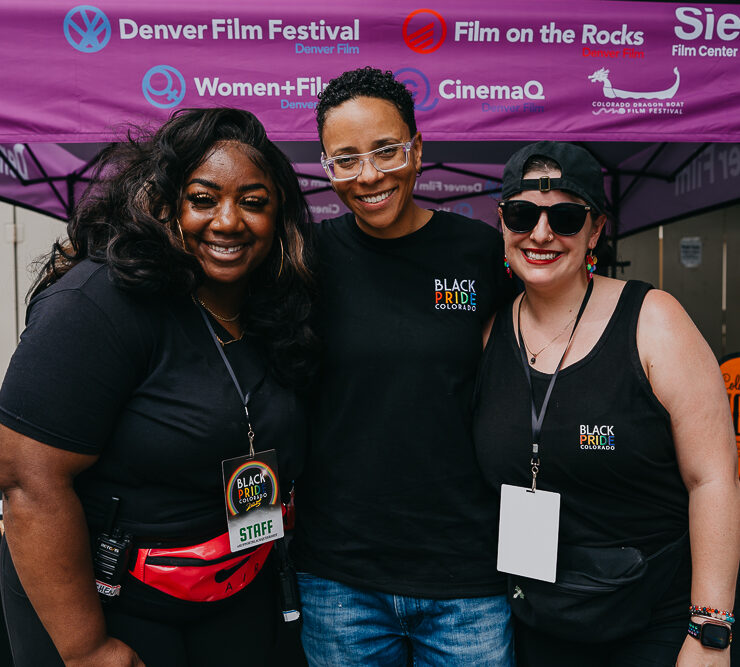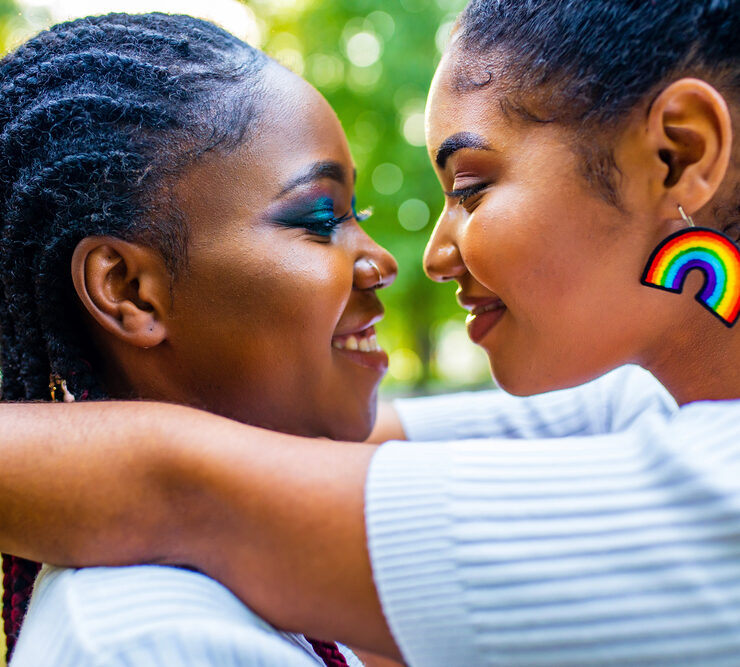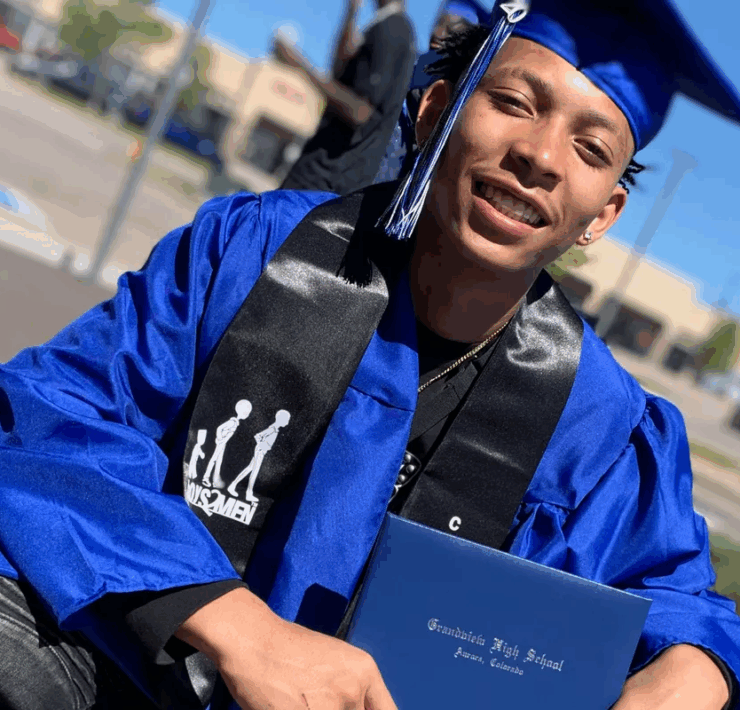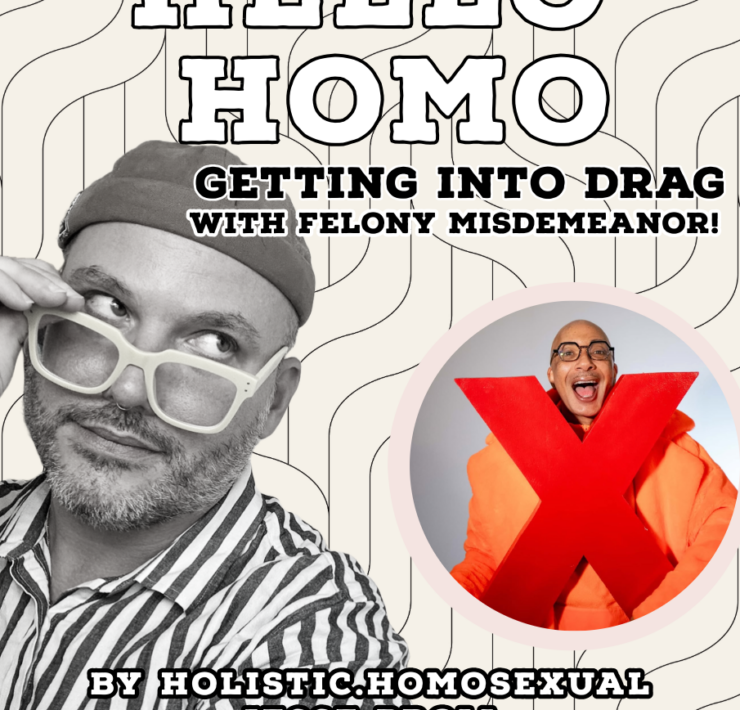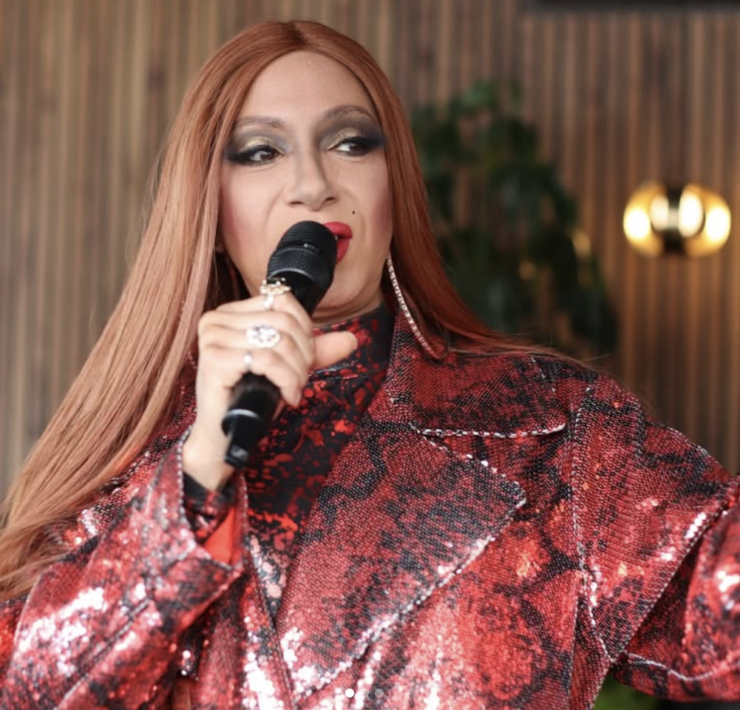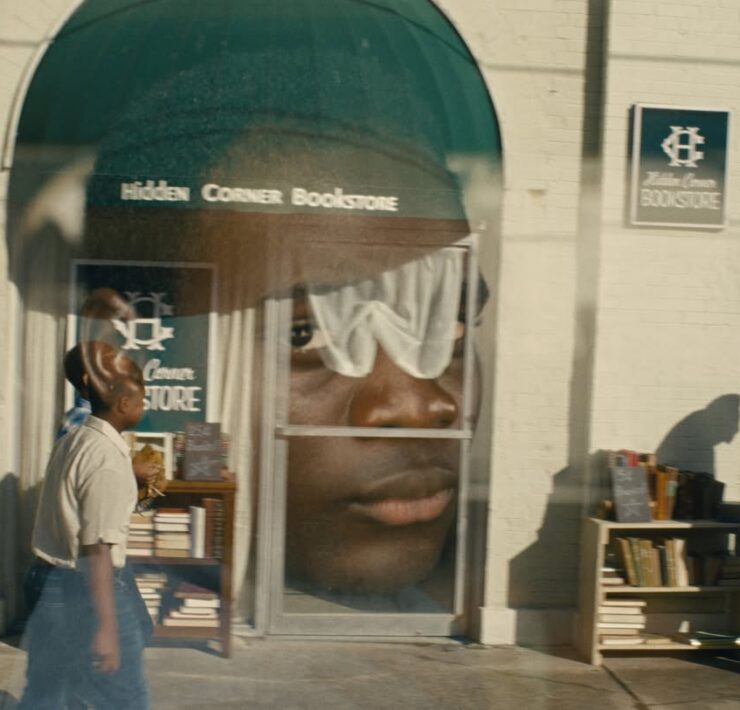Virtual Drag is a Lesson in Despair
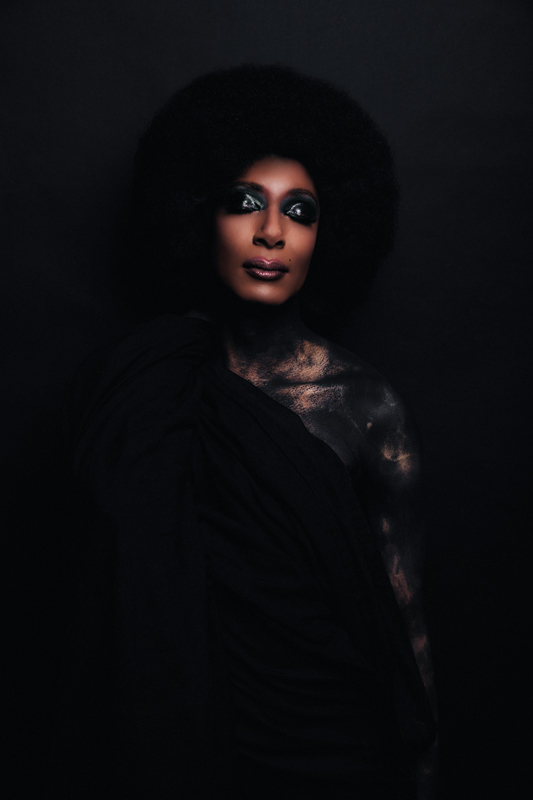
With the words “YAS QUEEN” and “werk hunty” populating the screen, the CO Drag Brunch Twitch stream is exactly what you would imagine a digital version of a drag show would look like. As if somehow, the real thing had been copied from the stage and pasted onto the screen in two dimensions.
The novelty of virtual drag, however, fades away into the background quickly as the performances take center-stage. In the seven productions of the weekly CO Drag Brunch, queens from across the state recorded themselves in their living rooms, empty spaces, and abandoned outdoors. While one would expect drag to deflate without its audience, it is somehow elevated by its isolation. Queens appear almost transcendent broadcasting from their private spaces in full regalia.
Miss Zarah, one of the queens on the growing list of those who have performed on the Twitch stream, recorded herself behind a black backdrop with glittering stars. Unlike a normal drag show, there was no other noise—no other distractions from the performance at hand. Moving her body through lyrics of Whitney Houston’s “I Wanna Dance With Somebody,” you can’t help but feel, too, that you want to dance with somebody—a desire that is pronounced in our quarantines and filled with more yearning than what is normally bearable in our regular lives.
As one of the many performers in the two-hour stream, Miss Zarah was followed and preceded by a long list of Colorado queens. A localized effort to bring work to drag queens and entertain audiences, with bars and clubs still closed, the CO Drag Brunch was one of the grassroots efforts to elevate local drag during the stay-at-home orders. For many queens, the digital show is their first online performance.
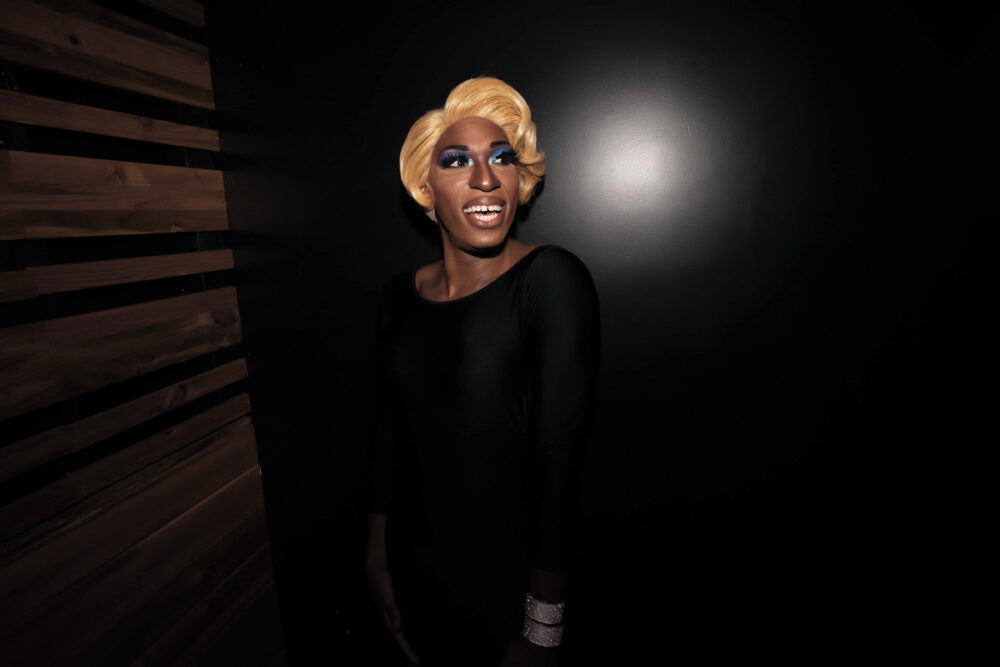
Miss Zarah said that the shift was an abrupt change, and it is not hard to understand why. Not only do digital performances require the usual trappings of drag, they also demand being adept at editing, sound, lights, camera angles, all the other elements of virtual production, as well as responding to the digital audience’s feedback in real time.
“I was not prepared or ready to be doing a digital drag performance. That has been the biggest issue, trying to get the right equipment and tools to create quality virtual drag,” Miss Zarah said.
However, each queen in the video stream manages to navigate the technological mazes with varying degrees of finesse. In this, there is a special weight to each performance that is missed in a physical drag show. With nothing to observe but the screen, the details of each performance came to life and jumped out of the screen as much as the queens did.
Punctuated by nothing more than a transition to the next video, each performance was itself a distilled form of self-expression. During a time when the notion of community feels obscure and elusive, the idea of watching other people perform as you sit passively behind a screen sounds like a distant connection at best. Yet, what makes virtual drag shows so special is that they draw in the personal through an elaborate treatment of creativity.
It is easy to dismiss the importance of drag as an extravagance or elaborately rhinestoned form of escapism. What possible value could powdered wigs and sharp contours hold in a turbulent moment of pandemic and protests? The answer to this is rooted in the long history of drag performance responding to, and even catalyzing, turbulent moments.
The move to virtual shows demonstrates the importance of community building brought through drag and its powers to conjure our imagination. In this moment of crisis, within our drab isolation, what virtual drag shows have given, is the rejuvenating and colorful power of wonder, not only for creativity, glamour, and comedy, but a wonder for the community and what healing may look like within it.
“It all started in community service and is the essence of drag,” Miss Zarah said. “I think it is really important, maybe now more than ever that the reason why we have the rights and the freedom that we have as queer people is because of a Black, trans woman.”
Referring to Marsha P. Johnson, the woman who led the Stonewall Riot in 1969 and Queer liberation movement of the 60s and 70s, in addition to the many drag queens who took part in the early movement, Miss Zarah urges members of the queer community to recognize that drag has never happened in a bubble, and this moment is no exception.
On Saturday, May 30, five days after the murder of George Floyd by police officers, Felony Misdemeanor performed on the Twitch stream with a multimedia video in response to police brutality. Donning large, gold earrings in the shape of Africa and a leather jacket, Felony remained somber as she sang along with Solange’s “B.U.F.U.” (By Us, For Us).
Demonstrably Black-oriented and defiantly political, Felony conjured up the essence of what drag has always been—a rebellion. One that is rooted in remembrance and motivated by action. From the Stonewall Riots that catapulted the queer rights movement, to a resistance against despair during the quarantine, to a creative call to action during a time when police brutality is as bad as its ever been, the digital rebellion of Denver drag queens is a reminder of drag’s original pursuit to dismantle hatred and destroy despair in all its forms.

“The inspiration for my ‘F.U.B.U.’ video was honestly the murders of Ahmaud Arbery and Breonna Taylor,” Felony said in a message over Instagram, Arbery being the 25-year-old Black man who was chased by armed, white residents of a South Georgia neighborhood while jogging, killed by gunshots and videotaped, in addition to Taylor, the 26-year-old Black woman killed by police after having her apartment broken into using a battering ram for a crime she had not even a tangential connection to.
Felony filmed her performance without knowing what would precipitate in the days leading up to and following the debut of her video (she recorded herself two days before the killing of George Floyd). The visuals in her performance displayed Dr. Martin Luther King Jr. in protest, the Little Rock 9, and various other marches and seminal moments in history. These images were shown in tandem with Felony’s lip syncing.
The performance is emotional, both for the viewers and Felony, who cuts off the performance early with tears forming under her thick lashes. “You can see me mess up my lip sync because I didn’t want to do it anymore,” Felony posts to her audience in the chat section of the Twitch feed.
With a tear streaming down her face, Felony turns away from the screen, and the video fades out to show the images of Jimmie Lee Jackson, Clifford Glover, Amadou Diallo, Oscar Grant, Aiyana Jones, Ramarley Graham, Trayvon Martin, Rekia Boyd, Jordan Davis, Jonathan Ferrell, Renisha McBride, Eric Garner, John Crawford III, Natasha McKenna, Anthony Hill, Walter Scott, Freddie Gray, the Charleston 9, Sandra Bland, Corey Jones, Philando Castile, Terence Crutcher, Jordan Edwards, Botham Jean, Atatiana Jefferson, Ahmaud Arbery, and Breonna Taylor—Black activists, military veterans, athletes, children, and average citizens killed through brutal force by the police and white supremacists for being Black.
“I was hoping to show whoever would watch that it’s not just the people in the video affected, but that everyone is,” she said. “So many of us have experienced racism, and we’re being killed in this ongoing murdering of Black folk. It has to stop.”
Despite the relevance and intention behind Felony’s performance, not everything about her change to a digital format has gone smoothly.
“The adjustment from the stage to online is major. I’ve been performing for audiences for 20 years, and then to just come to a sudden stop is quite jolting,” Felony said. Her frustration with the shift to online was echoed by Miss Zarah, who found it difficult at first to create a visually compelling show and look within the limitations of video.
The larger project of CO Drag Brunch is a rebellion itself, too—against the despair that the coronavirus-enforced isolation has encouraged. Once again, and digitally, queens come out to bring life and hope into a tragedy. In the 51 years following Stonewall riots and the 60-plus years of performance in Denver, drag has reminded a lynchpin in turbulent moments.
In times of crisis, drag represents the collective aspirations of our community: self expression through creativity, honesty through humor, and survival through rebellion. Though the centuries-old-art of drag has become an entertainment behemoth in the last decade, spilling into mainstream culture, its grassroots beginnings are alive and well—cackling and throwing up fists from the corners of the internet and in our minds, as we long for a time in the future when, once again, we are able to physically embrace the community that they provide.
As we reminisce on Prides of the past, we may wonder, what does Pride, and a show of celebration, mean right now? Virtual drag, and the queens who have created it, give us a framework to answer that question.
“Drag queens’ roles will not change due to the protests and the police brutality of Black folk. If anything, it may make them more political. I’m seeing it happen online, myself included. I see them taking accountability for themselves and holding others accountable,” Felony said. “Even asking the right questions on how to help.”
The virtual drag shows of queens like Felony Misdemeanor show that drag and Pride have never just been a celebration—joy never arrives without the survival of suffering, but instead, is always at its side. The shows are a remembrance of the past and a movement toward greater justice for all members of the community.
On June 3, LA Pride announced via Twitter that they would join hands with Black Lives Matter for a mass demonstration in support of Black members of the queer community and the Black community at large. On June 20, Denver PrideFest will begin its virtual celebration. In questioning what steps must be taken moving forward, it is relevant to look at the work already being done.
Looking toward the future, Felony is creating a drag production with an all-Black cast. Her show “BLACK DIAMONDS” is set to debut the first week of Pride and will take place, as all elements of PrideFest this year, online. For drag queens, the future looks like it always has, rife with uncertainty and change, but full of creativity and community. Felony Misdemeanor and Miss Zarah are among the many resilient queens who remain optimistic about the place of drag in this moment.
In reflecting on her future, Felony said, “I can’t wait to showcase these amazing, beautiful, Black entertainers,” and gives us a glimpse into what the future of drag may look like for us all—inclusive, embracing, and rebellious.
Photo of Felony Misdemeanor by Jeremiah Corder
Photo of Miss Zarah by Brian Degenfelder



